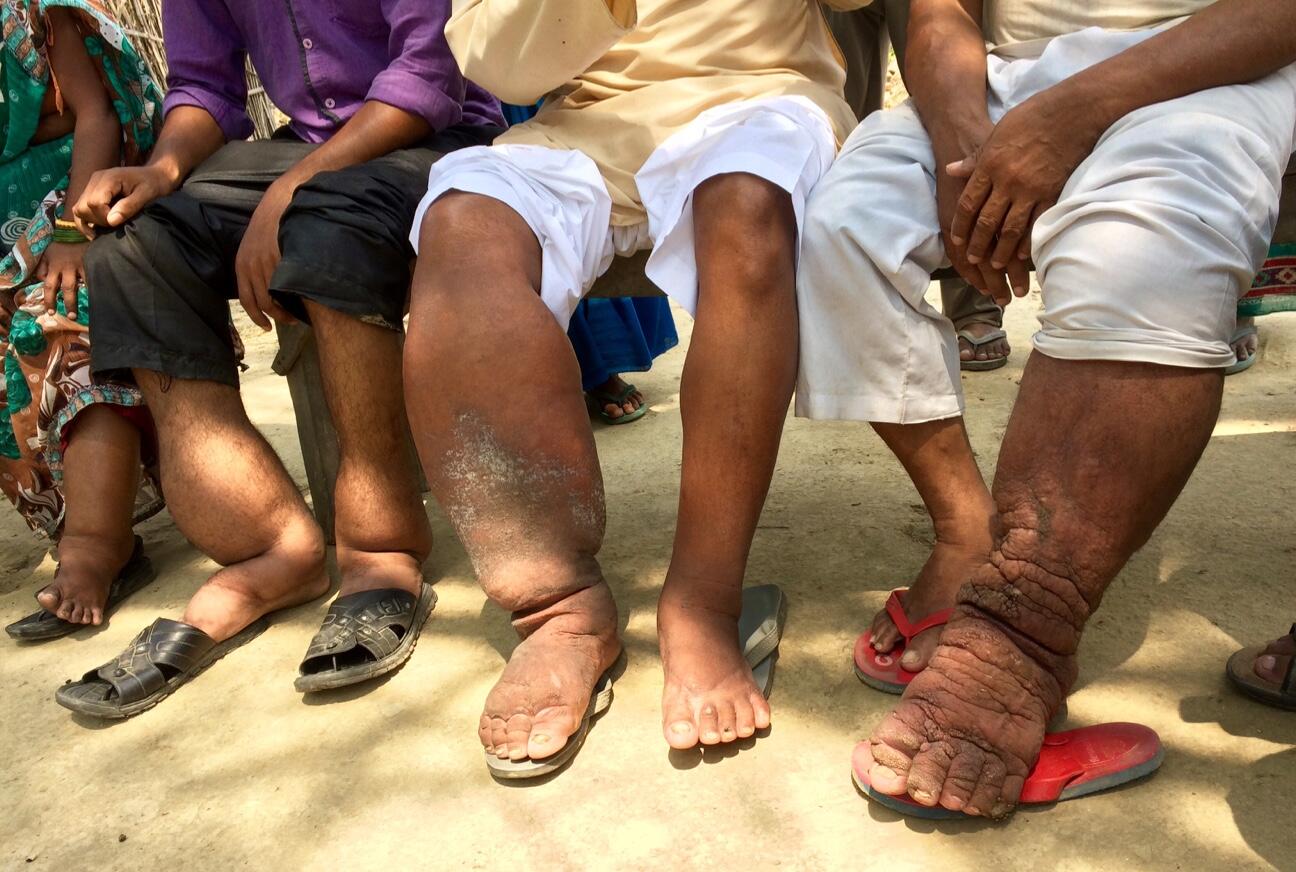
Researchers from LSTM’s Research Centre for Drugs and Diagnostics (RCDD) have found a way of significantly reducing the treatment required for lymphatic filariasis and onchocerciasis from several weeks to seven days. By targeting Wolbachia, a bacterial symbiont that the filarial parasites need to live, the team has discovered a drug synergy that enables effective treatment over a shorter time.
Lymphatic filariasis (LF), which can cause elephantiasis or hydrocele, swelling of the limbs or scrotum and onchocerciasis, also known as river blindness, affect millions of people in some of the world’s poorest communities. Both are caused by filarial parasites for which the bacterial symbiont Wolbachia is essential for development. Filarial Neglected Tropical Diseases are prioritised for elimination, in line with fulfilment of the 2030 United Nations Sustainable Development Goals. A consensus of expert opinion, including the WHO, and major donors, USAID and UK DFID, considers that successful implementation of a macrofilaricidal (curative) or permanent sterilising drug would greatly accelerate the end game elimination of lymphatic filariasis and onchocerciasis. Traditional treatment for these conditions require repetitive, long-term mass drug administrations, and although targeting the symbiont with doxycycline has proved clinically effective, it is programmatically challenging due to the long treatment time and exclusion of pregnant women and children.
In a new paper, published in the journal PNAS, researchers provide proof-of-concept of a radical improvement to the targeting of Wolbachia via a drug synergy between the anthelmintic drug albendazole and antibiotics. LSTM’s Professor Mark Taylor is senior author on the paper. He said: “As part of the A·WOL programme, we have screened all registered drugs for anti-Wolbachia activity, which has allowed us to look at repurposing existing and registered drugs against these debilitating conditions. The combination of an antibiotic and the anti-worm drug albendazole provided the greatest surprise when they acted synergistically to reduce the treatment time from weeks to days, opening up the opportunity to scale-up this approach at the community level.”
The team believe that their work is of immediate public health importance because the drugs that have been used, rifampicin and albendazole, are already registered. “These drugs can be tested in infected people as soon as possible,” continued Professor Taylor.
The first author on the paper, LSTM's Dr Joe Turner, added, “the discovery of drug synergy between a common anthelmintic and different classes of antibiotics is also exciting because even more potent synergism may be evident when we combine with our next generation, ‘designer’ anti-Wolbachia drugs currently in development as part of the A·WOL programme. Potentially, we may be in a position to reduce curative treatment time frames down to five days or less for filariasis, with better acceptability and reduced costs for patients and local health systems”
doi:10.1073/pnas.1710845114